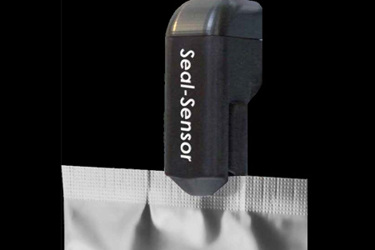Medical Device Package Inspection

Medical device manufacturing is a labor intensive process, requiring operator involvement from manufacturing through final inspection of products. Unit costs are typically high for a variety of reasons, including design, regulatory compliance, specialized labor and unique equipment involved in the manufacturing process. Complementing the high cost of manufacture, there is also a high value placed on the sterility and quality of the final product. High product costs and superior quality requirements are the two single reasons for successful integration of airborne ultrasound seal inspection for medical device packaging. This case study focuses on the use of Seal-Scan® for final seal quality verification for an implantable sterilized medical device.
The application is an implantable device packaged in a pre-made Tyvek® header bag. When the manufacturing cost of a product is high, there is also a significant cost for poor quality. Defect detection often occurs further downstream in the manufacturing process from where the actual defect was created, which results in producing an increasing number of units before the process is corrected. Defect detection may also occur too far downstream, making product rework impossible. Manual visual inspection is typically used to evaluate the quality of the final package seal, but too often a defect or quality deviation goes undetected. Operators can typically detect only 80% of defects at best, and diminishes as the time spent inspecting increases. Manual visual inspection is also less effective depending on the package materials, which also includes multi-layered foil for some package formats.
The quality of a seal is dependent on physical properties only, and has little to do with the visual appearance of a seal area. Heat sealing bars can leave a seal imprint on the outside of a package while the inner seal fails to reach bonding temperature and never seals completely or has a weak peel strength. As proven in ASTM F1886, manual visual inspection has an effective probability of detection that ranges from 60-100% in detecting 75 micron channel leaks based on similar package types.
Get unlimited access to:
Enter your credentials below to log in. Not yet a member of Pharmaceutical Online? Subscribe today.
